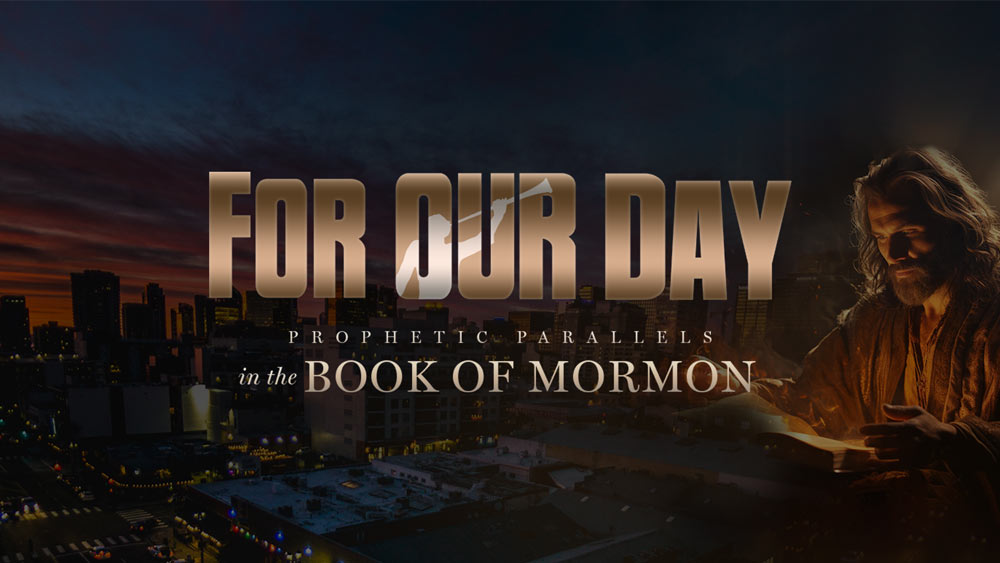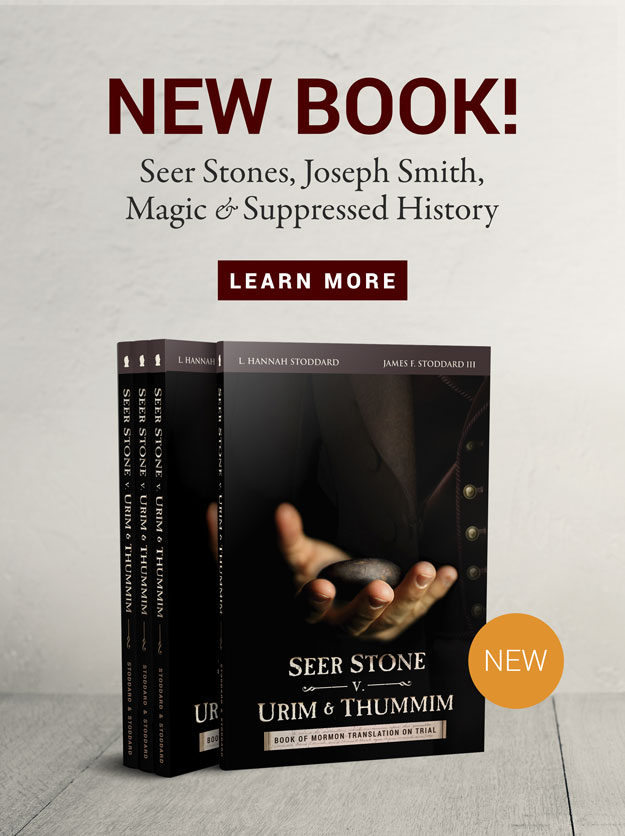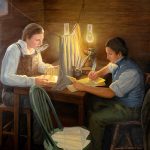| Abigail Adams | |
|---|---|
 |
|
| Born | November 11, 1744(1744-11-11) Weymouth, Province of Massachusetts Bay |
| Died | October 28, 1818(1818-10-28) (aged 73) Quincy, Massachusetts, U.S.A. |
| Spouse | John Adams |
| Children | Abigail “Nabby” John Quincy Susanna Charles Thomas Elizabeth (stillborn) |
| Father | Reverend William Smith |
| Mother | Elizabeth Quincy |
Abigail Adams is one of the eminent spirits who appeared to President Wilford Woodruff in the St. George Temple (Latter-day Saint, LDS) on August 21, 1877. This interesting story is detailed in the Eminent Spirits Appear to Wilford Woodruff wiki. Abigail Adams was a woman who exercised great and far-reaching Influence in her day and generation and that influence always for the greatest good. Her love and dedication to her husband, her devotion to God, and her patriotic zeal for her country are evidenced by her letters. She was the wife to John Adams and the mother to John Quincy Adams, both of which appeared with her to Wilford Woodruff in the St. George Temple.
“The wife of John Adams was born his social superior, according to the conventions of a community founded almost exclusively on motives of religious zeal, and where “the ordinary distinctions of society were in a great degree subverted, and the leaders of the church, though without worldly possessions to boast of, were held highest in honor.” Abigail Adams was a woman who exercised great and far-reaching Influence in her day and generation and that influence always for the greatest good. Her love and dedication to her husband, her devotion to God, and her patriotic zeal for her country are evidenced by her letters. She was the wife to John Adams and the mother to John Quincy Adams, both of which appeared with her to Wilford Woodruff in the St. George Temple.
Life Sketch from Wives of the Signers
Taken from the book: Wives of the Signers

Abigail Adams birthplace, Weymouth MA
She was the daughter of the Rev. William Smith, a Congregationalist minister of Weymouth. Her grandfather was also a minister, and through her veins, on her mother’s side, flowed the blood of the Quincys, as blue as any in New England. To this mating John Adams brought nothing but the vigor and strength of mind and body that had come to the son of a farmer of limited means but of correct life and high ideals. He had his profession but little practice, and the profession itself was not held in the highest regard by many of the good people of the day. Still there was no decided opposition and John and Abigail were married October 26, 1764, when she was twenty years old. They went to Braintree to live on his little farm, for although he was a lawyer of promise and acknowledged capabilities, his income from his profession must be helped out by his farm in order that they might live.” (Wives of the Signers: The Women Behind the Declaration of Independence, by Harry Clinton Green and Mary Wolcott Green, A.B., Aledo, TX: Wallbuilder Press, 1997)
Early Life and Education
“Mrs. Adams had but a limited education. Educational opportunities, especially for women, were restricted in the early days, and the delicate condition of her health had always precluded her being sent from home to acquire even the common-school training of the day. As she herself wrote in later years: ‘My early education did not partake of the abundant opportunities which the present day affords and which even our common schools now afford. I was never sent to any school; I was always sick.’
The girl was, however, a great reader and a voluminous letter-writer. ‘The women of the last century,’ her biographer continues, ‘were more remarkable for their letter-writing propensities than the novel-reading and more pretentious daughters of this era; their field was larger and the stirring events of the times made it an object of more interest. Even though self-taught, the young ladies of Massachusetts were certainly readers and their taste was not for the feeble and nerveless sentiments, but was derived from the deepest wells of English literature. Almost every house in the Colony possessed some heirlooms in the shape of standard books, even if the number was limited to the Bible and Dictionary. Many, especially ministers, could display relics of ‘their English ancestors’ intelligence in the libraries handed down to them, and the study of their contents was evident in many of the grave correspondences of that early time.'” (Wives of the Signers: The Women Behind the Declaration of Independence, by Harry Clinton Green and Mary Wolcott Green, A.B., Aledo, TX: Wallbuilder Press, 1997)
Beginning of Revolutionary War
“In 1774, Mr. Adams was one of the delegates chosen from Massachusetts to confer with delegates from other Colonies upon matters of common interest; and in August he accompanied Samuel Adams, Robert Treat Paine, and Thomas Cushing to Philadelphia, where the meeting was held. In two months he was again at home, but in May, 1775, the Congress again met and he returned to Philadelphia, making the long journey on horseback. At Hartford, only five days after he had left home, he received the news of the happenings at Lexington.
That was an eventful year for Mrs. Adams. Bancroft writes of her:
‘In November, 1775, Abigail Smith, wife of John Adams, was at her home near the foot of Penn Hill charged with the sole care of her little brood of children; managing their farm; keeping house with frugality, though opening her doors to the houseless and giving with good will a part of her scant portion to the poor; seeking work for her own hands and ever busily occupied, now at the spinning-wheel, now making amends for never having been sent to school by learning French, though with the aid of books alone. Since the departure of her husband for Congress, the arrow of death had sped near her by day and the pestilence that walks in darkness had entered her humble mansion. She herself was still very weak after a violent illness; her house was a hospital in every part; and such was the distress of the neighborhood she could hardly find a well person to look after the sick. Her youngest son had been rescued from the grave by her nursing. Her mother had been taken away and, after the austere manner of her forefathers, buried without prayer. Winter was hurrying on; during the days family affairs took all her attention, but her long evenings, broken by the sound of the storm on the ocean, or the enemy’s artillery on Boston, were lonesome and melancholy.
Ever in the silent night ruminating on the love and tenderness of her departed parent, she needed the consolation of her husband’s presence; but when she read the King’s proclamation she willingly gave up her nearest friend exclusively to his perilous duties and sent him her cheering message:
‘This intelligence will make a plain path for you, though a dangerous one. I could not join to-day in the petition of our worthy pastor for a reconciliation between our no longer parent. state but tyrant state and these Colonies. Let us separate; they are unworthy to be our brethren. Let us renounce them; and instead of supplications, as formerly, for their prosperity, let us beseech the Almighty to blast their counsels and bring to naught all their devices.'” (Wives of the Signers: The Women Behind the Declaration of Independence, by Harry Clinton Green and Mary Wolcott Green, A.B., Aledo, TX: Wallbuilder Press, 1997)
1775 Attack on Boston

This cairn marks the spot where Abigail Adams and her young son, John Quincy, watched the burning of Charlestown on June 17, 1775, during the Battle of Bunker Hill.
“In December, Mr. Adams was home again, but only for a few weeks, and in March he was on his way back to Philadelphia. One of her letters to him at this time speaks of the anticipated attack on Boston, and says:
‘It has been said to-morrow and to-morrow, but when the dreadful to-morrow will be I know not.’
‘Yet even as she wrote,’ says her biographer,** ‘the first peal of the American guns rang out their dissonance on the chilling night winds, and the house shook from cellar to garret.” It was no time for calm thoughts now, and she left her letter unfinished to go out and watch the lurid lights that flashed and disappeared in the distance. Next morning she walked to Penn Hill where she sat listening to the amazing roar and watching the British shells as they fell around about the camp of her friends. Her home at the foot of the hill was all of her earthly wealth, and the careful husbanding of each year’s crop her only income; yet while she ever and anon cast her eye upon it, the thoughts that welled into words were not of selfish repinings, but of proud expressions of high-souled patriotism. ‘The cannonade is from our army,’ she continues, ‘and the sight is one of the grandest in nature, and is of the true species of the sublime. ‘Tis now an incessant roar. To-night we shall realise more terrible scenes still; I wish myself with you out of hearing, as I cannot assist them, but I hope to give you joy of Boston, even if it is in ruins before I send this away.'” (Wives of the Signers: The Women Behind the Declaration of Independence, by Harry Clinton Green and Mary Wolcott Green, A.B., Aledo, TX: Wallbuilder Press, 1997)
John Adams in Europe
“Mr. Adams returned early in the fall, but it was but a short respite for her loneliness as he came to announce that he had been chosen to go to France. At first it was thought that he could take his wife and little ones with him, but the manifold dangers of the voyage deterred him. A small and not very fast vessel had been secured, and this the British fleet was bent on capturing, as John Adams was a man with a price on his head. On every account it was decided that it would be best for Mr. Adams to go alone, but he compromised by taking his son, John Quincy Adams, then eleven years old, and they sailed in February. Again was Mrs. Adams left alone to care for her little farm and her young children, with but little to break the lonesome monotony but her letters. After an absence of eighteen months Mr. Adams came home, but it was only for a breathing spell, as almost immediately he was sent to Great Britain to negotiate a peace.
To the wife at least the parting seemed the hardest they had yet endured and her heart found relief in the following words:
‘My habitation, how desolate it looks! my table, I sit down to it, but cannot swallow my food. Oh! why was I born with so much of sensibility, and why possessing it have I so often been called on to struggle with it? Were I sure you would not be gone, I could not withstand the temptation of coming to you, though my heart would suffer over again the cruel torture of separation.’ In the spring of 1781, Mrs. Adams could stand the separation no longer; some six months before she had written: ‘I feel unable to sustain even the idea that it will be half that period ere we meet again. Could we live to the age of antediluvians, we might better support this separation, but with threescore years circumscribing the life of man, how painful is the idea that of that short space only a few years of social happiness are our allotted portion!’ A few months after that, she laid her aged father away in the Boston churchyard beside her mother, and there was nothing left to hold her away from her husband except the hardships and perils of a sea voyage.” (Wives of the Signers: The Women Behind the Declaration of Independence, by Harry Clinton Green and Mary Wolcott Green, A.B., Aledo, TX: Wallbuilder Press, 1997)
Abigail Removes to Europe
“It was early in 1784 that Mrs. Adams, accompanied by her daughter, sailed in the Active for England. It was Mrs. Adams’s first sea voyage and she suffered so much from sea-sickness that she wrote nothing for the first sixteen days of her voyage–a long time for Abigail Adams to keep her pen from paper. From that time her journal is a narrative of rare interest. Mrs. Adams reached London July 23d, where she was met by her husband and by her son, John Quincy Adams, whom she had not seen for six years. The united family accompanied the father to Paris, where they took up their residence at Auteuil, not far from the residence of Dr. Franklin, and where they resided for a year. Then they removed to London, Mr. Adams having been appointed Minister to that country.
‘Mrs. Adams, at the age of forty,’ writes her biographer, ‘found herself suddenly transplanted into a scene wholly new. From a life of the utmost retirement in a small and quiet country town in New England, she was at once thrown into the busy and bustling scenes of the populous and wealthy cities of Europe. Not only was her position novel to herself, but there had been nothing like it among her countrywomen. She was the first representative of her sex from the United States at the Court of Great Britain. The impressions made upon her mind were, therefore, uncommonly open and free from the restraints which an established routine of precedents is apt to create. Her residence in France during the first of her European experience appears to have been much enjoyed, notwithstanding the embarrassment felt by her from not speaking the language. That in England, which lasted three years, was some-what affected by the temper of the sovereign. George and his Queen could not get over the mortification attending the loss of the American Colonies, nor at all times suppress the manifestation of it, when the presence of their Minister forced the subject on their recollection.'” (Wives of the Signers: The Women Behind the Declaration of Independence, by Harry Clinton Green and Mary Wolcott Green, A.B., Aledo, TX: Wallbuilder Press, 1997)
John Adams Elected as Vice-President
“Mr. Adams returned to America with his family in the summer of 1788. The government was organized under its present Constitution in April of the following year, and he was elected vice-president and established his home in New York. After a year’s residence in New York, the Adamses removed, with the seat of government, to Philadelphia. She still called the little farm-house at Braintree, home, and visited there a portion of every year. It was from Braintree that she wrote in February, 1797, to President Adams, as he succeeded Washington:
‘The sun is dressed in brightest beams
To give thy honours to the day.
And may it prove an auspicious prelude to each ensuing season. You have this day to declare yourself head of a nation. ‘And now, O Lord my God, thou hast made thy servant ruler over the people; give him an understanding heart, that he may know how to go out and come in before this great people; that he may discern between good and bad. . . . My thoughts and my meditations are with you, though personally absent; and my petitions to Heaven are that ‘the things that make for peace may not be hidden from your eye.’ My feelings are not those of pride or ostentation upon this occasion. They are solemnized by a sense of the obligations, the important trusts, and numerous duties connected with it. That you may be enabled to discharge them with honour to yourself, with justice and impartiality to your country, and with satisfaction to this great people shall be the daily prayer of your, Abigail Adams.'” (Letter to John Adams, February 8, 1797) (Wives of the Signers: The Women Behind the Declaration of Independence, by Harry Clinton Green and Mary Wolcott Green, A.B., Aledo, TX: Wallbuilder Press, 1997)
Abigail Becomes First-Lady
Final Years
“The remainder of her life, 1801 to 1818, Mrs. Adams lived almost uninterruptedly at Quincy and her declining years were marked with that cheerfulness and dignity that were ever her dominant characteristics. She retained her faculties to the last and as one who knew her well, said: ‘Her sunny spirit enlivened the small social circle around her, brightened the solitary hours of her husband, and spread the influence of her example over the town where she lived.’ To her granddaughter she wrote October 26, 1814: ‘Yesterday completes half a century since I entered the marriage state, then just your age. I have great cause of thankfulness that I have lived so long and enjoyed so large a portion of happiness as has been my lot. The greatest source of unhappiness I have known in that period has arisen from the long and cruel separations which I was called, in a time of war, and with a young family around me, to submit to.’
Mrs. Adams died of an attack of fever, October 26, 1818, in the seventy-fifth year of her age, and was laid at rest in the Congregational church of Quincy, where eight years later her eminent husband was laid beside her. Over their last resting-place has been placed a marble slab with an inscription prepared by their eldest son, John Quincy Adams.” (Wives of the Signers: The Women Behind the Declaration of Independence, by Harry Clinton Green and Mary Wolcott Green, A.B., Aledo, TX: Wallbuilder Press, 1997)
Christ-like Character Traits
“A woman, who exercised great and far-reaching Influence in her day and generation and that influence always for the greatest good, was Abigail Adams, wife of John Adams of Massachusetts. Always distrusting her own abilities and education, and never realizing that she had talent other than that of being a good wife to John Adams and a mother to his children, her letters pulse with life and feeling, while the pedantic, though patriotic, poems, plays, essays, and histories of her friend, Mercy Warren, are relegated to the dusty shelves of the reference libraries.
Abigail’s years were not filled with great events, though she lived in a history-making epoch and her life lines were closely interwoven with those who were among the makers of history. It was never given to her to perform deeds of heroism for country or for cause, but her life was always so lived that we feel that she would have gone to the scaffold if necessary with the same quiet, gracious dignity which always characterized her, from the little farmhouse at Braintree to the gilded drawing-rooms of the French and English Courts, or to the unfinished parlors of the White House.” (pg. 32, Wives of the Signers: The Women Behind the Declaration of Independence, by Harry Clinton Green and Mary Wolcott Green, A.B., Aledo, TX: Wallbuilder Press, 1997)
Resources
E-books
Letters of Abigail Adams
Familiar Letters of John Adams and His Wife Abigail Adams During the Revolution








